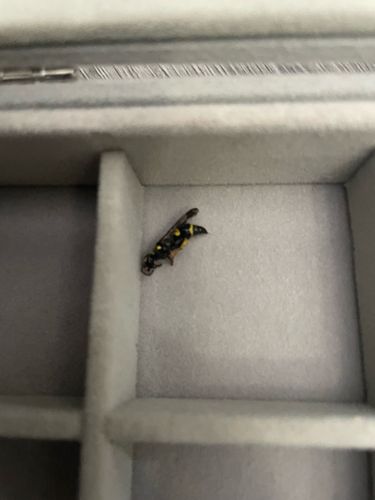Yellowjacket
Scientific Name: Vespula spp. or Dolichovespula spp.
Order & Family: Hymenoptera, Vespidae
Size: 10-16 mm (worker), up to 19 mm (queen)

Natural Habitat
Nests are typically found underground in abandoned rodent burrows, tree cavities, or human-made structures (e.g., attics, wall voids, sheds). They are commonly found in gardens, parks, picnic areas, and anywhere food sources are available.
Diet & Feeding
Adult yellowjackets feed on nectar, fruit juices, and other sugary substances. They hunt insects, spiders, and other arthropods to feed their larvae, which require protein to grow. They are also scavengers, readily feeding on carrion and human food scraps.
Behavior Patterns
Yellowjackets are social insects living in colonies. They are known for their aggressive defensive behavior when their nest is disturbed. Unlike bees, they can sting multiple times without dying. They are often seen foraging for food, especially during late summer and early autumn.
Risks & Benefits
Risks: Aggressive stinging behavior, especially when nests are threatened, poses a risk to humans, particularly those allergic to venom. Stings are painful and can cause swelling, itching, and in severe cases, anaphylaxis. Benefits: Yellowjackets are predators of many pest insects, helping to control pest populations in gardens and agricultural settings, making them beneficial for pest control.
Identified on: 10/9/2025